Featured
Products
-
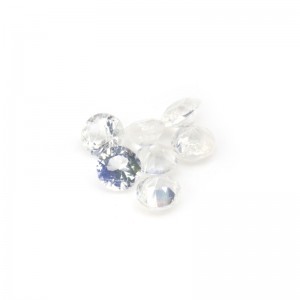
New Arrival China Mystic Moonstone Beads - Natural Gems White Moonstone Round 3.0mm – Datianshanbian
Product Detail: Moonstone is a layered gemstone mineral of orthoclase and Albite. Moonstone is mainly produced in Sri Lanka, Myanmar, India, Brazil, Mexico and the European Alps, of which Sri Lanka produced the most precious. Moonstone is usually colorless to white, also can be light yellow, orange to light brown, Blue Gray or green, transparent or translucent, with a special moonlight effect, hence the name. This is due to the parallel intergrowth of Lamellar Aphanites of the two feldspar, w... -
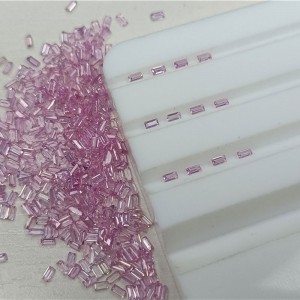
PriceList for Sapphire Jewelry - Natrual Pink Sapphire Loose Gems Baguette 1x2mm – Datianshanbian
Product Detail: Pink Sapphire reddish sapphire: earlier, the international gem community believed that only corundum with medium depth to dark red or purplish red can be called ruby. Those that turn red light to very light are called pink sapphires. However, at the third session of the International Association of colored gemstones held in Sri Lanka in May 1989, it was decided to abolish the name and include such gemstones into the scope of Ruby (but some people still disagree with this resol... -
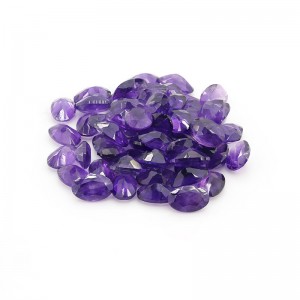
Factory Cheap Hot Colored Cubic Zirconia - Amethyst is the birthstone of February and symbolizes loyalty – Datianshanbian
Product Detail: Amethyst is a tripartite crystal system, the crystal is hexagonal columnar, the cylindrical surface is transverse, there are left shape and right shape, twin-crystal is very common. The hardness is 7. The crystal often contains irregular or winged gas-liquid inclusions. It is one of the most expensive members of the crystal family, because the water crystal contains Mn, Fe3+ and appears purple. Transparent, with obvious polychromatism observed under dichromatic mirror. The ame... -
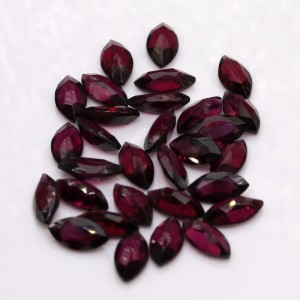
China Cheap price Garnet Necklace - Natrual Gems Purple Garnet Marquise 2x4mm – Datianshanbian
Product Detail: The difference between Garnet and similar gem and synthetic garnet. Gemstones similar in colour to various garnets, including rubies, sapphires, artificial corundum, topaz, emeralds, Jadeite, etc. , are heterogeneous and can be distinguished by polarisation. It can be distinguished in density, inclusion, refractive index, dispersion and fluorescence. The difference between Garnet and Synthetic Green Garnet is mainly due to the internal inclusions and density. The synthesized G... -
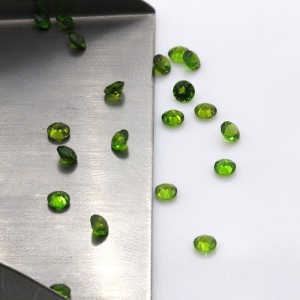
Wholesale Chrome Diopside Gemstones - Size 1.0mm Round Cut Natural Diopside Loose Gems Crystal Clean – Datianshanbian
Product Detail: The common color of diopside is blue-green to yellow-green, brown, yellow, purple, colorless to white. Luster for glass luster. If chromium is present in diopside, the mineral has a green tinge, so diopside gems are often confused with other gems such as yellow-green olivine, (green) tourmaline, and chrysoberite, which of course depend on other physical differences between the minerals to distinguish them. Some diopside may also have cat’s eye; Such gems, such as quartz,... -
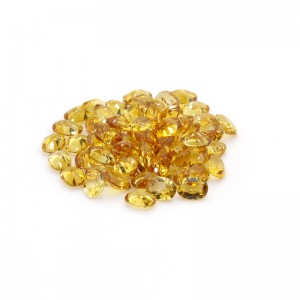
Factory wholesale Real Citrine Jewelry - Citrine Oval Hanging Ornaments Inlaid Bare Stone Wholesale – Datianshanbian
Product Detail: Citrine varies in color from yellow to light brown and is easily confused with citrine. The yellow color in citrine is due to the presence of iron oxide in water. Natural citrine is scarce and produced in few places, with only Brazil and Madagascar producing high-quality Citrine in limited quantities. Amethyst and nicotinite are often heated to make them change color and look like citrine, or even fake citrine. Citrine has complete joints, citrine has no joints, and the lowest... -

2022 Good Quality Brazil Amethyst - Natural Cordierite Loose Gems Round Cut 1.0mm – Datianshanbian
Product Detail: Cordierite is a silicate mineral, usually light blue or light purple, glassy luster, transparent to translucent. Cordierite also has the characteristic of being remarkably polychromatic (tricolor), emitting light of different colors in different directions. Cordierite is usually cut into traditional shapes, and the most popular color is blue-purple. Cordierite is similar in color to sapphire, so it is also called water sapphire. Nicknamed the poor man’s sapphire because ... -
Professional China Loose Natural Stones Diamond - Natrual Ruby Loose Gems Baguette 1.5x3mm – Datianshanbian
Product Detail: Ruby [1] , which means corundum of a red color, is a type of corundum and consists primarily of aluminum oxide (AL 2O 3) . The red color comes from chromium (CR) , mainly Cr2O3, the content is generally 0.1 ~ 3% , the highest is 4% . Containing Fe, Ti and blue said Sapphire, non-chromium CR color of other colors of corundum also collectively known as Sapphire. Most natural rubies come from Asia (Burma, Thailand, Sri Lanka, Pakistan, China Xinjiang, China Yunnan, etc.) , Africa... -
Reasonable price Ruby Price Carat - Natrual Ruby Loose Gems Baguette 1.5x3mm – Datianshanbian
Product Detail: Ruby [1] , which means corundum of a red color, is a type of corundum and consists primarily of aluminum oxide (AL 2O 3) . The red color comes from chromium (CR) , mainly Cr2O3, the content is generally 0.1 ~ 3% , the highest is 4% . Containing Fe, Ti and blue said Sapphire, non-chromium CR color of other colors of corundum also collectively known as Sapphire. Most natural rubies come from Asia (Burma, Thailand, Sri Lanka, Pakistan, China Xinjiang, China Yunnan, etc.) , Africa... -

2022 High quality Zamurd Stone - Amethyst is the birthstone of February and symbolizes loyalty – Datianshanbian
Product Detail: Amethyst is a tripartite crystal system, the crystal is hexagonal columnar, the cylindrical surface is transverse, there are left shape and right shape, twin-crystal is very common. The hardness is 7. The crystal often contains irregular or winged gas-liquid inclusions. It is one of the most expensive members of the crystal family, because the water crystal contains Mn, Fe3+ and appears purple. Transparent, with obvious polychromatism observed under dichromatic mirror. The ame... -

Hot New Products Amethyst Stone - Amethyst is the birthstone of February and symbolizes loyalty – Datianshanbian
Product Detail: Amethyst is a tripartite crystal system, the crystal is hexagonal columnar, the cylindrical surface is transverse, there are left shape and right shape, twin-crystal is very common. The hardness is 7. The crystal often contains irregular or winged gas-liquid inclusions. It is one of the most expensive members of the crystal family, because the water crystal contains Mn, Fe3+ and appears purple. Transparent, with obvious polychromatism observed under dichromatic mirror. The ame... -

Personlized Products Rough Cut Tanzanite - Amethyst is the birthstone of February and symbolizes loyalty – Datianshanbian
Product Detail: Amethyst is a tripartite crystal system, the crystal is hexagonal columnar, the cylindrical surface is transverse, there are left shape and right shape, twin-crystal is very common. The hardness is 7. The crystal often contains irregular or winged gas-liquid inclusions. It is one of the most expensive members of the crystal family, because the water crystal contains Mn, Fe3+ and appears purple. Transparent, with obvious polychromatism observed under dichromatic mirror. The ame...







